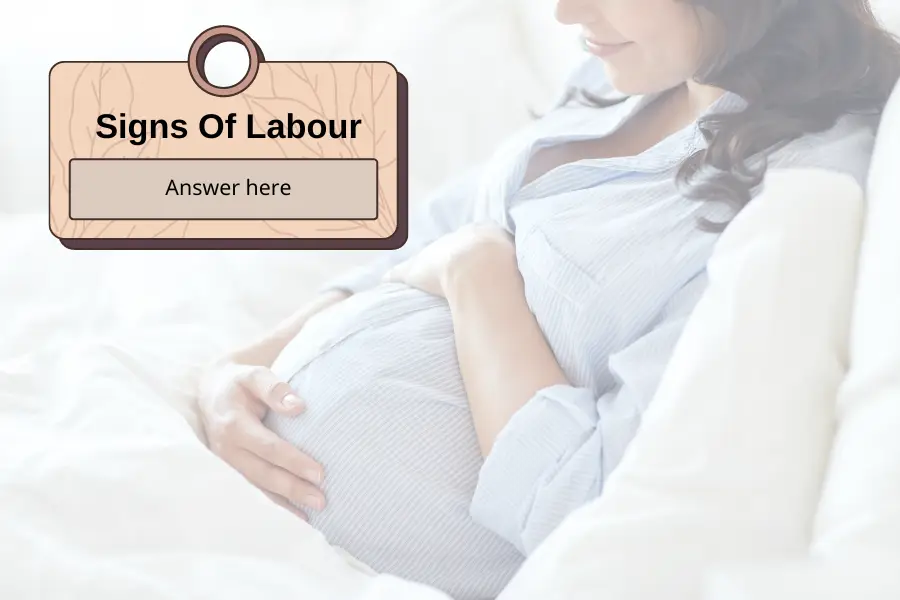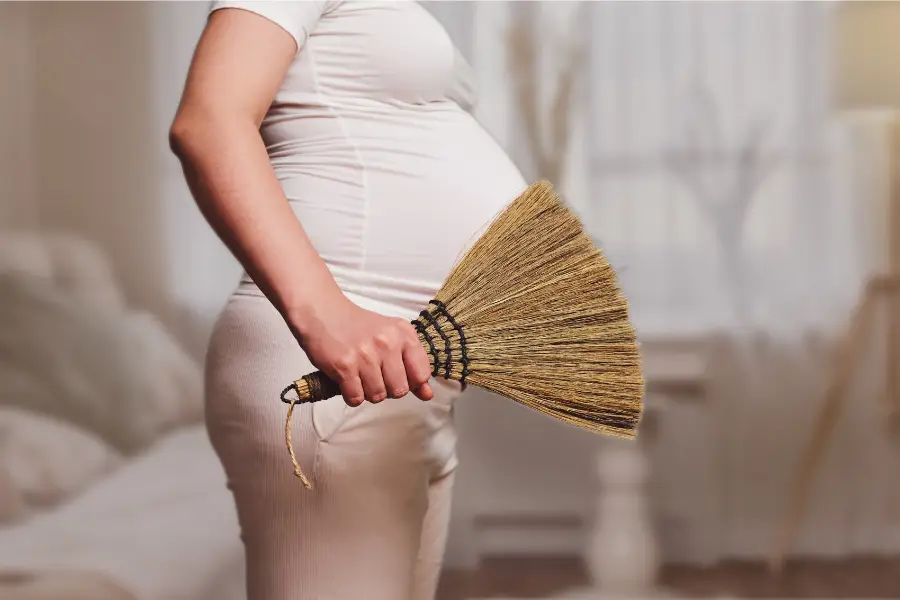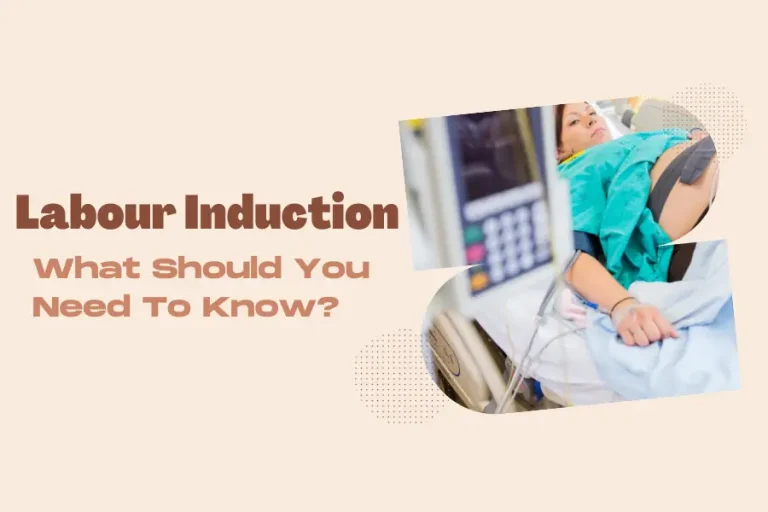
Many pregnant women watch movies and imagine that labour starts very quickly and dramatically. After couples of contractions, the babies are suddenly born and cry. However, labor is not easy like that. It takes time and even for the same person each childbirth is different, so it has difficulties in predicting when labour is coming. Somehow, mother instinct may feel some subtle clues to know the time to see your baby. In this article, Babies Parent would indicate some common signs of labor.
What Are Signs Of Labour?
Labor is the first phrase of childbirth. Labor starts with uterine contractions and cervical dilation, and culminates in the birth of your baby. Labor is the first phase of childbirth and happens between weeks 38 and 41 of pregnancy. Labor starts with uterine contractions and cervical dilation, and culminates in the birth of your baby.
When your due date approaches, you might experience subtle physical indications that labor is on the horizon. This is the time when the cervix dilates and thins. This progress might last several hours to several days. Normally, mothers who have already delivered a baby before tend to move more quickly through labor. Mothers should stay at home at this time as doctors will recommend that mothers back home if they go to the hospital or maternity unit. Furthermore, pregnant women need to explore more about the stages of labour and know what you should do at home during the latent phase.
Symptoms About To Labouring
Mothers, particularly first birth, are worried because they can not recognize when it’s time to labour to go to the hospital. In this section, Babies Parent will indicate some signs that pregnant mothers might meet. Furthermore, if mothers need any help or have any critical signs, they should frequently visit your doctor or midwife to help them diagnose.
Pre-labour Signs (Early Signs Of Labour)
Early labor can persist between 6 and 12 hours and one of the most common symptoms of early labor is contractions. However, individuals will or may not have early signs of labor, and each pregnant mothers also has different signs, so these signs are a flexible target.
Baby Descends
For the first pregnancy, mothers could feel their babies drop into their pelvis. This progress can happen around two to four weeks before labor starts.
In the next pregnancies, the phenomenon will lighten until labor is on the horizon. The ideal position to make the baby’s exit is head down and low and not in the breech delivery.
The bad news is that mothers feel like they waddle more. Mother also may suffer frequent urination like they are in the third trimester as the little one is pushing down on mother’s bladder. In contrast, there is still good news. Mothers could breathe easier than before because the baby no longer presses the mother’s lungs.
Cervix Begins To Dilate
The cervix will dilate and efface in the days or weeks to give birth. In the mother’s weekly check-ups of the final phase of pregnancy, the healthcare provider will measure and track dilation and effacement through an internal exam. However, mothers do not worry much if your dilaction is slower than others as each mother has different cervix dilation.
Cramps And Increased Backache
When labor comes near, the mother will see clear symptoms such as cramping and lower backache and pain in the groin particularly the mother already went through first birth. These pains come from the muscles and joints which are straining and shifting in preparation for birth.
Joints Feel Loose
During the pregnancy, the mother’s body releases a hormone called relaxin. Relaxin hormone loosens pregnant women’s muscles, joints and ligaments to help their body and pelvis open up and start to deliver as labor approaches. Therefore, if any mothers feel clumsy in the last trimester, this may be the reason.
Diarrhea
Not only the muscles in the uterus are relaxing for childbirth, but also other muscles such as those in the rectum in the mother’s body. And loose muscles in rectum could result in prelabor diarrhea. Probably, ongoing diarrhea that you may have undergone in pregnancy is not as bad as prelabor diarrhea. In spite of being annoying, it is a good phenomenon for the expectant mother’s body and remember to stay hydrated.
Stop Gaining Weight
Pregnant mothers tend to stop gaining weight at the end of pregnancy, even some women lose weight. These are normal signs of pre-labour and do not have any bad effect on the infant’s weight in the mother’s belly. In fact, the baby still gains weight, mother might be dropping since lower levels of amniotic fluid, increased activity, more frequent bathroom breaks.
Tiredness And Nesting

Tiredness returns in the final days and weeks of pregnancy and makes mothers feel like they are back to the first trimester. The size of your belly is bigger and the pressure on the bladder and other organs can make you hardly sleep. So, Babies Parent think mothers should use pillows for support and take naps at all costs.
In contrast, some women feel energetic. This energy is known as the nesting instinct. Mother may have a strong urge to clean and organize. This sensation is normal if mothers know how to control it.
Signs Of Active Labour
Unlike the early signs of labor, they usually happen at home and may last over several hours. And when mothers begin active labor, they should be in the hospital. This stage of labor can remain from 4 to 8 hours.
Breaking of Water
Labour happening is different from films. Labor rarely occurs in public and breaks a lot of water. The membrane rupture and amniotic fluid leakage usually occur after other labor symptoms for most women. Breaking water might not always be a big gush; for some mothers, it is more like a steady trickle.
Water breaking is one of the final signs of labor and processes naturally in only about 15 percent of births or less. Therefore, it’s not a reliable indicator to depend on as the first sign of labor.
Around 90% of full-term pregnancies women (up to 37 weeks) will go into labour naturally within 24 hours after their water breaking. Individuals who can not be natural labour need medical intervention because the risk of infection rises after the sac ruptures. If mothers are worried that your water has broken, contact your specialist or midwife immediately.
Strong contractions

For the first childbirth, the mother may not know actual labor contractions. Or they do not distinguish the differences between real labor contractions to Braxton Hicks contractions by evaluating the frequency of the pain, intensity and position. If mothers are not sure, they should ask themselves these questions such as: Are the contractions regularly spaced? How long do the contractions last? Are the contractions strong?
In fact, the actual labor contractions are regular intervals and for 30 to 70 seconds each. They become stronger and more frequent over time even when mothers change lying positions. Mothers are hardly able to talk or move around during labor contractions.
A Mucusy Release (Bloody Show)
Fluid seals off the uterus to form a protective shield for the child from external environment and infection. This fluid is called a “fluid plug”. When the signs of labour start, the cervix softens and dilates, which lead to the mucus plug to fall away.
This mucus is a 1-2 teaspoons stain or a blob in size and reaches up to 2 inches long. The discharge may be brown due to old blood or pink from since the cervix thins. In the several days before labor, mothers can observe vaginal discharge is increased and likely thickened . A mucusy release is a good sign of imminent labour.
Stomach and Lower Back Hurt

If mothers feel intense menstrual cramps, stomach or lower abdominal pressure or pain in the lower back that radiates down into the legs, it may be a sign of “later labour”. This labour pain usually appears when the baby has his head down but face forward and it will not disappear even change positions.
Some Things We Should Notice About Signs Of Labour
During pregnancy, mothers may feel many strange things even though they may have been pregnant many times before, so these are the things that mothers need to keep in mind during pregnancy.
Situations Must Call Doctor Or Healthcare Provider
Whether this is the first pregnancy or being pregnant many times, each pregnancy is different and mothers may still face many different situations that you have never known before. Therefore, if mothers are not sure if they are in labor or any uncertainty, mothers do not hesitate to call your doctor and explain your situation.
And if women are close to the due date and experience these symptoms, quickly see your doctor and midwife:
- Bleeding or bright red fluid (not brown or pinkish).
- Water breaks and appears green or brown fluid (probably meconium, or first stool of the baby. It is dangerous if the baby ingests it during giving birth.)
- Blurred vision or diplopia, an intense ache in the head or sudden swelling. (sign of preeclampsia, which is caused by pregnancy-induced high blood pressure. This sign requires medical attention)
Signs Of Preterm Labour
Around 90 percent of pregnancies reach the 37th week. Preterm labor is labor starts before 37th week1. If any mothers experience labor symptoms before reaching 37 weeks, they must contact their practitioner.
Ways To Encourage Natural Labor
The due date comes but mothers do not show any signs of labor, at that time, the mother will need labour induction. At first, women should try it at home, and if natural ways are not effective, they should go to the hospital.
However, Babies Parent think that mothers should talk to their doctor first before doing anything to expedite childbirth.
What To Do To Pass the Time During Early Labor
Relaxation Technique

Here are some techniques to promote relaxation and comfort during labor:
- Mental and physical unwind: Meditation, visualization, and repetitive mantras.
- Creating soothing environment: Incorporate aromatherapy, dim lighting, and whispering.
- Self-hypnosis: Practice hypnobirthing techniques for relaxation.
- Hydrotherapy: Take a warm bath or shower.
- Comforting touch: Enjoy a massage, stroking, brushing your hair, or holding hands.
- Change positions: Try walking, lying on your side, bouncing on an exercise ball, lying over an exercise ball, or getting on your hands and knees.
- Deep breathing: Use deep breathing for relaxation and to provide needed oxygen to the fetus.
Take a warm bath
If your water hasn’t broken yet, a warm bath can help relax and distract you during the early stages of labour. Some controversy exists about water birth. Medical organizations support water immersion during early signs of labour. This incorporates the American College of Obstetricians and Gynecologists (ACOG).
The benefits of water inundation in the early stages of work incorporate:
- Reduced need for epidural, spinal, or paracervical analgesia.
- Shorter labour times.
- It creates a feeling of relaxation.
Hydrate

During pregnancy, the mother’s body should frequently absorb enough water to keep the mother hydrated. One dangerous mistake of obstetric tradition has long restricted eating and drinking during labour. However, recently, medical groups have recognized the need for water amid labour.
The American Society of Anesthesiologists (ASA) suggests pregnant women should drink clear liquids if they are not in uncomplicated labour. People at higher risk of aspiration include the obese. Moreover, people with diabetes or obese have difficulty in airways, they are at higher risk of aspiration. Therefore, doctors usually require them to drink less fluid.
There are some types of clear liquids include:
- Water.
- Fruit juice without pulp.
- Black coffee.
- Tea.
- Gas drink.
- Sports drinks.
Conclusion
Experiencing the signs of work can be both amazing and anxious. If any women had any signs of labour less than 37 weeks pregnant, they would contact your doctor or midwife right away. This might show the onset of preterm labour.
No matter how long and how many times mothers are pregnant, if you are not sure your signs of labour, you have to call your healthcare provider. They are available to guide you through this process and want you and your babies healthy.
Sources
- Donaldson, C. (2023, October 5). 37 Weeks Pregnant: Baby Development, Symptoms & Signs | Week by Week. What to Expect. https://www.whattoexpect.com/pregnancy/week-by-week/week-37.aspx ↩︎






